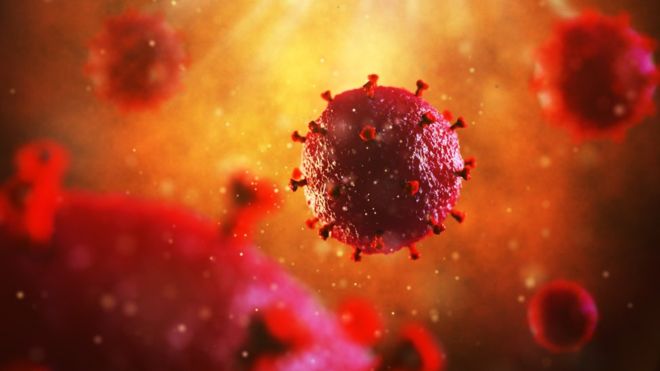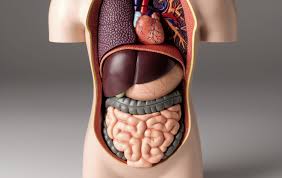by Akil Wingate
In recent days, a second and then a third stem cell transplant patient have been touted as being everything from “HIV-free” to “cured” of the virus that causes AIDS. The first such patient reached the same “results” a decade ago. What’s up for debate is not the actual science behind the procedure – no one doubts that stem cell transplants can lead to a vast number of treatments – but the language behind these new claims is worrying to many in the scientific community.
These new patients are regarded as being “undetectable” wherein the virus cannot be found in their blood, but a number of people have already maintained undetectable or controller status through treatment with potent antiretroviral drugs (highly active antiretroviral therapy or HAART and combination antiretroviral therapy or cART).
As society is quick to throw out the word “cure,” what are the real nuts and bolts behind this treatment? Is it any more viable, feasible, and cost effective than the current slew of treatments available to the public that have garnered the same results?
Disintegration
More than a decade ago, an ambitious Berlin research lab sought to help a leukemia cancer patient with HIV through a vigorous attack that included radiotherapy and a bone marrow transplant (including 2 stem cell transplants). The idea that stem cells transplanted from an HIV–resistant donor might lead to successful treatment or even a cure, hinged on stem cells and aggressive cancer treatment working hand in hand.
The result? The HIV virus in Timothy Brown’s body dwindled down to undetectable numbers, what many would perceive as a cure. A decade later, Brown is largely regarded as the first man cured of HIV.
Before the transplant, Brown had already managed to control his HIV through antiretroviral therapy after first being diagnosed in 1995. When he was diagnosed with leukemia in 2006, his doctors needed to treat him on a dual front. After chemotherapy killed most of the cancerous cells in his body, Brown’s doctors matched him with a donor who had the homozygous CCR5∆32 mutation, the very same mutation resistant to HIV-1 and HIV-2.
Brown underwent his first transplant in 2007. Because of complications from the transplant, Brown underwent a second transplant in 2008. The second proved successful as his newly reconstituted cells augmented his immunity and ultimately became resistant to the most common strains of the HIV virus.
Since that time, Brown has been hailed as the first man cured of the virus as well as his cancer. He’s become the face of various campaigns searching for a cure. More than ten years later, Brown has trumpeted the push for greater developments in stem cell research in hopes of a cure.
Taking Off
Fast forward to today: An unnamed London patient who had been diagnosed with HIV in 2003 and Hodgkin’s Lymphoma in 2012 was treated in an ambitious collaborative endeavor that included researchers from Oxford, Imperial College London, University College London and Cambridge. This time the patient was treated with a combination of chemotherapy and stem cell transplantation. Again, the donor was HIV-resistant; and, more than a year and a half later, the patient’s cancer is in remission and his HIV undetectable.
Lead researcher Dr. Ravindra Gupta says that after the treatment, the patient has gone 18 months without taking any antiretroviral drugs, and the virus is still undetectable. “We went 16 months without stopping, just to make sure the cancer was in remission, the patient was well, and to make sure the HIV reservoir in the body showed there was very little of the virus, if any at all. And so we are now 18 months in and we’re confident this will be a long term remission.”
Similarly to Brown, the London patient’s donor had the HIV resistant mutation. The new cells that thus far have formed in the patient’s body have staved off any threat of HIV infection.
Mere days after the announcement of the London patient’s apparent success, a third patient was announced to have successfully treated HIV as well. Dr. Annemarie Wensing announced that a Dusseldorf patient has been “functionally cured” of the virus after having similarly received a bone marrow transplant from a donor benefitting from the HIV-resistant gene mutation. No evidence of the virus has been found in the patient’s gut nor lymph nodes.
Jumping Someone Else’s Train
As the research pours in, support behind a stem cell cure has ballooned. Two “cures” in the span of a week has led the scientific community and the larger public to look more closely at how a cure is found. What is currently known about the HIV virus challenges the brightest minds in research to look for new ways to fight it: from strong drug cocktails to stem cell treatment and everything in between.
In the cases of Timothy Brown and the unnamed London patient, researchers benefitted from a rare HIV-resistant donor with a specific mutation for their trials. HIV latches on to the CCR5 receptor in the body, handicapping the body’s ability to combat the virus. Only one percent of Europeans are naturally HIV-resistant with a gene mutation from both parents that give them TWO CCR5 receptors; other populations have a lower percentage. The mutation sloughs off the virus, giving it nothing to latch onto in the body, much less replicate itself. The HIV-1 virus therefore cannot invade cells in its typical fashion by attaching to CD4 cells and ultimately CCR5 receptors.
Fortunately for Brown, the bone marrow transplant was not only successful, the HIV-resistant cells subdued the virus in his body. Similarly for the London patient, his donor match was also HIV-resistant and subsequently cowed the virus into submission.
Never Enough
Yet, here things become convoluted: Timothy Brown already had controller status after using antiretroviral drugs to subdue his 1995 HIV diagnosis and keep it under management well into the 2000s before his first transplant. Recently, Brown said he takes a daily antiretroviral, Truvada, in order to protect himself against an even rarer strain of the virus that attaches to the CXCR4 receptors and any new risk of infection going forward.
Is it ultimately a cure if the patient still needs to take an antiretroviral therapy? Brown states, “I eventually decided that PrEP (pre-exposure prophylaxis) is an important tool in preventing new infections and this is an extremely large part of my mission.”
In all three of these cases, the patients matched successfully with their donors. However, according to Dr. Kristina Allers, thirty percent of bone marrow patients die. A transplant weakens the body’s immune defense system, thus making it vulnerable to infections it otherwise could fight. Then, there is always the risk of rejection that could ultimately kill the patient.
Most importantly in the case of two of these transplants, the risky procedure was necessary to combat aggressive cancers. Taking on such a risk as a singular treatment for HIV alone is untested, and potentially dangerous. So researchers are looking at blood transplants of spinal cord blood from HIV-resistant donors as a means towards a cure.
Doubt
With possibilities of treatments such as spinal cord blood as strong alternatives and potential cures, are these deliverable to places where HIV is the most prevalent? Can a cure be delivered around the globe?
At the moment, the answer is no.
Three successful patients out of the countless numbers of others is hardly considered a victory. Researchers are hesitant to get on board with the treatment and are quick to point out the challenges for most people living with HIV: accessibility to treatment, deliverability of treatment, and compatibility from donors.
Accessibility
The EU benefits from state-sponsored health care, affording patients access to a host of treatments that can ultimately see them living long fulfilling lives with HIV under check. The US, however, is an anomaly, given its own storied past with health care overhauls from one presidential administration to the next. Under the second Bush Administration in the United States, the world saw the launch of the Presidential Emergency Plan For AIDS Relief (PEPFAR). That eventually spawned The Global Fund in an effort to eradicate HIV and Malaria in Africa. Meanwhile Stateside, without any standardized universal health care, many patients struggle without the dire care they need in spite of various initiatives and organizations that help get treatment for people living with HIV.
Deliverability
Delivering HAART or cART to third world countries is difficult. Stem cell therapy treatments are almost impossible. How many hospitals and laboratories are adequately equipped for such a procedure? And in regions where there is conflict, how can the safety of donor transport, much less a successful procedure, be ensured?
Compatibility
As Dr. Allers pointed out, there is a high risk of donor rejection. The three cases where stem cell transplants took place were with three caucasian patients from Europe, but what about a person of color, or someone from a third world country? What are the chances that donor rejection will spike going from a European donor with the HIV-resistant gene mutation to an African or Asian recipient stricken with HIV?
Fascination Street
No one can predict how long any of the three patients will live or whether their lives will be fully functional and free of any antiretroviral therapy to manage their immunity. Researchers cannot readily classify these cases as cures despite all indications that they are currently free of the virus. What can be said is that stem cell therapy does offer new hope for HIV treatment sometime in the future. Whether or not it translates into an actual vaccine, much less a cure, will depend largely on deliverability, cost, and viability: all things that scientists should not have to add to their chalkboards of equations when looking for hope.










Add comment